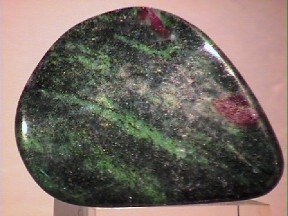Daily Celestial Challenge Thursday: Nature
Special Appreciation to @SirKnight for this great opportunity given to us.
Hi steemians, in my today's topic on celestial challenge I am going to be talking about Rocks as a part of nature's gift to the world and how they are formed.
Rocks
A Rock, by a simple definition, is a solid with more than one component of a mineral or mineraloid. A single crystal is not a rock; but two crystals that are joined together, even if they are the same mineral, are technically a rock. The minerals or mineraloids may be large enough to be easily identified (such as in a pegmatitic granite), barely distinctive grains (as in a schist), or in a mixture of microscopic grains such as in a slate. A rock does not even need to have crystals but may be in the form of a non-crystalline solid state or glass, an amorphous mixture in which the chemicals are not crystallized into minerals, such as in obsidian. Generally rocks are considered to only be natural objects, but sometimes man-made substances are included as rocks.
Types of Rocks
Rocks are not all the same!
The three main types, or classes, of rock are sedimentary, metamorphic, and igneous and the differences among them have to do with how they are formed.
Sedimentary
Sedimentary rocks are formed from particles of sand, shells, pebbles, and other fragments of material. Together, all these particles are called sediment. Gradually, the sediment accumulates in layers and over a long period of time hardens into rock. Generally, sedimentary rock is fairly soft and may break apart or crumble easily. You can often see sand, pebbles, or stones in the rock, and it is usually the only type that contains fossils.
Examples of this rock type include sandstone,conglomerate and limestone.

Image source: Google
An example of a Sandstone
Metamorphic
Metamorphic rocks are formed under the surface of the earth from the metamorphosis (change) that occurs due to intense heat and pressure (squeezing). The rocks that result from these processes often have ribbonlike layers and may have shiny crystals, formed by minerals growing slowly over time, on their surface.
Examples of this rock type include gneiss and marble.

Image source: Google
An Example of a gneiss
Igneous
Igneous rocks are formed when magma (molten rock deep within the earth) cools and hardens. Sometimes the magma cools inside the earth, and other times it erupts onto the surface from volcanoes (in this case, it is called lava). When lava cools very quickly, no crystals form and the rock looks shiny and glasslike. Sometimes gas bubbles are trapped in the rock during the cooling process, leaving tiny holes and spaces in the rock.
Examples of this rock type include basalt and obsidian.

Image source: Google
An example of obsidian